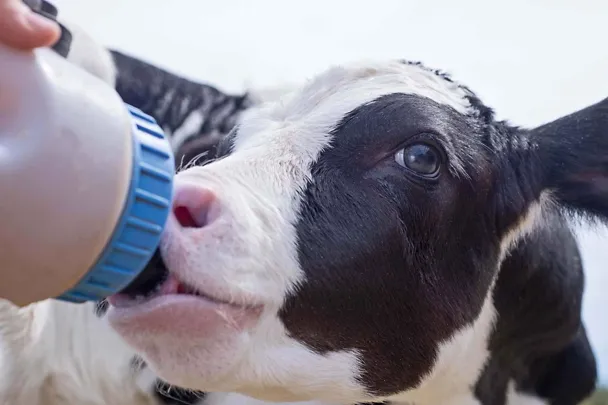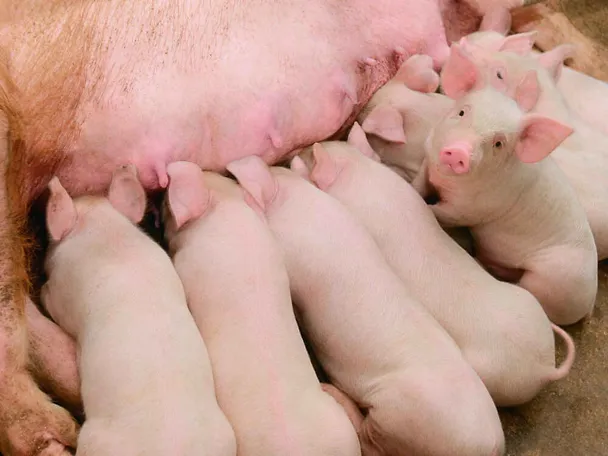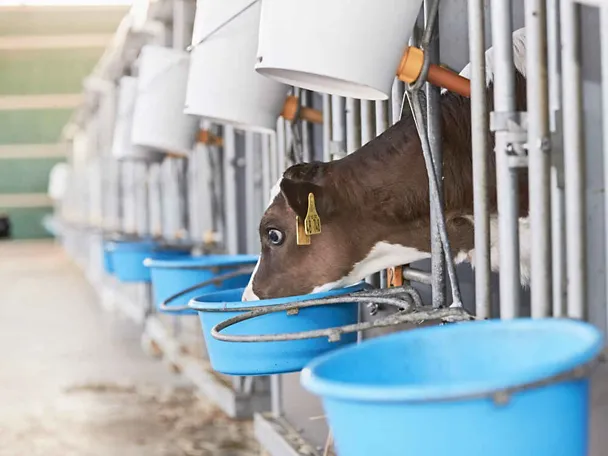Colostrum: New findings on calves’ vital food source

© anakondasp - stock.adobe.com
Calves are born with no real immunity per se. Instead, they rely on inheriting antibodies from their mother's colostrum to build up their body's defences. Antibodies are a calf's main defence against disease during its first few weeks of life, essentially keeping them alive. After two or three weeks, calves gradually start to fight pathogens by themselves and develop an active immune system (see Fig. 1). The stronger their passive immune system during the first few days and weeks, the stronger their active immune system will become in the future. That’s why a calf's supply of colostrum has such a long-term influence on its health and vitality.
Plenty – quality – early
A plentiful supply of good quality colostrum as early as possible is the ideal. With every hour that passes between a cow calving and its first milking, the antibody content in its colostrum drops. Furthermore, the calf's gut only starts to mature gradually after birth. As such, the relatively large antibody molecules can only reach the bloodstream through the intestinal wall at this early stage.
Colostrum should therefore always be fed to a calf within four hours of its birth. The quality of colostrum is judged by its antibody content. It takes around 200 g of antibodies for calves to build a stable passive immunity. If the colostrum contains 80 g of antibodies per litre, which is considered good quality, that means a calf needs to be fed at least 2.5 litres.
Using a refractometer as a simple tool
A refractometer can be used as an easy way to determine the level of immunoglobulin G (IgG), which makes up 90% of the antibody content in colostrum. The aim is to feed a calf with approx. 180 g IgG via the colostrum to ensure a supply of 200 g of antibodies. The lower the IgG content, the higher the quantity of colostrum required (see Fig. 2). A good colostrum should contain at least 22 Brix (see Fig. 3). That corresponds to an IgG content of around 70 grams per litre of colostrum (see Fig. 4).
Brix value can be measured using a refractometer
During a study at Gut Hülsenberg, researchers were able to prove that the Brix value of blood serum can also be determined using a refractometer to monitor the supply of colostrum. The total protein (TP) content in the blood serum of 44 calves was measured on the 2nd, 5th and 10th days after birth. This is a key indicator for the amount of antibodies circulating in the blood. The higher the value, the better the supply of antibodies via the colostrum.
In parallel to determining the TP content, the Brix value of the serum was measured using a refractometer. It indicates a strong correlation between both values (see Fig. 5). A refractometer can therefore be used to determine whether the colostrum supply is adequate.
A serum TP content of over 5.2 g per 100 ml is assumed to be sufficient for a stable immune system. This corresponds to a Brix value of between 8 and 9. The results from Gut Hülsenberg show that in this case most of the calves came in above the critical value and therefore received sufficient high-quality colostrum.
With regard to the animals that fell below this limit, it is important to analyse – as on any working farm – how the colostrum supply can be optimised further. In addition to the quantity and timing of colostrum provision, this also includes the dry cow feeding regime, milk fever and ketosis prevention measures , and a stress-free calving process.



